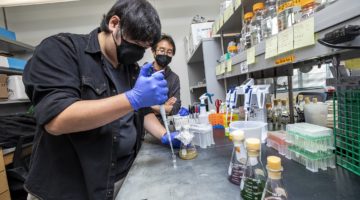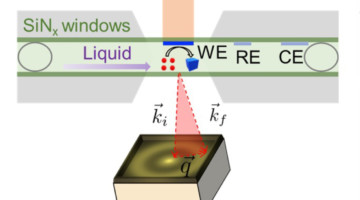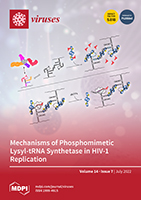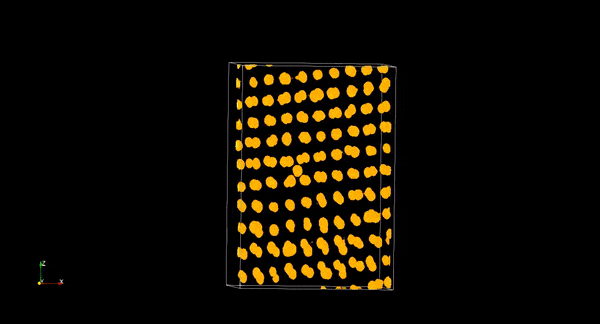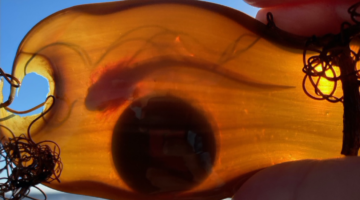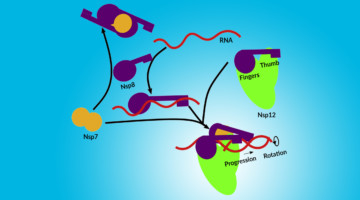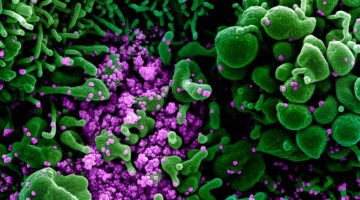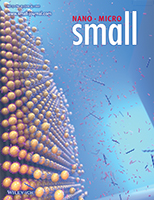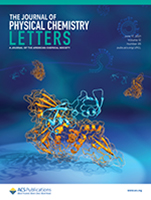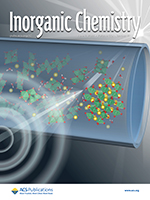A group of researchers studying the world’s most abundant protein, an enzyme involved in photosynthesis called rubisco, showed how evolution can lead to a surprising diversity of molecular assemblies that all accomplish the same task. The findings reveal the possibility that many of the proteins we thought we knew actually exist in other, unknown shapes. Read more »
Operando Study of CO2 Reduction by Copper Nanoparticles
Since copper is necessary to catalyze the reduction of CO2, a greenhouse gas, to valuable products, scientists are working hard to improve its selectivity and activity. Now, researchers have developed an operando capability that can help in this effort by simultaneously probing chemical valence and interparticle dynamics. Read more »
Phosphomimetic S207D Lysyl–tRNA Synthetase Binds HIV-1 5′UTR in an Open Conformation and Increases RNA Dynamics
Binding assays, RNA chemical probing, and SAXS showed that phosphomimetic S207D LysRS binds in an open conformation preferentially to dimeric HIV-1 genomic RNA. A new working model is proposed wherein a dimeric phosphorylated LysRS/tRNA complex binds to a genomic RNA dimer, facilitating tRNA primer release and placement onto the binding site. Future anti-viral strategies that prevent this interaction are envisioned. Read more »
With a Little Help, New Optical Material Assembles Itself
Researchers have demonstrated that tiny concentric nanocircles self-assemble into an optical material with precision and efficiency. Electron microscopy and x-ray scattering revealed the structure and spatial distribution of each ingredient in the resulting materials. The new findings could enable the large-scale manufacturing of multifunctional nanocomposites. Read more »
How Shark Egg Cases Balance Toughness and Permeability
Also known as “mermaid’s purses,” shark egg cases are both tough and permeable—two opposing characteristics that are necessary for the embryo’s survival. X-ray scattering at the ALS and electron microscopy helped explain how the material’s nanoarchitecture contributes to its toughness, informing future development of high-performance synthetic materials. Read more »
Assembly of the SARS-CoV-2 Replication Mechanism
Using a multimodal approach that included x-ray scattering at the ALS, researchers determined how components of the SARS-CoV-2 replication mechanism fit together. A better understanding of how this protein complex works provides insight into potential structural or functional weak spots to exploit for drug development. Read more »![]()
![]()
Deconstructing the Infectious Machinery of the SARS-CoV-2 Virus
Scientists collaborated to model the complex protein responsible for SARS-CoV-2 replication, revealing its potential weak spots for drug development. The investigation hinged on data collected from many advanced imaging techniques, including small-angle x-ray scattering (SAXS), crystallography, and small-angle neutron scattering (SANS). Read more »
Rapid In Situ Ligand-Exchange Process Used to Prepare 3D PbSe Nanocrystal Superlattice Infrared Photodetectors
A new strategy for retaining long-range order during ligand exchange of nanocrystal superlattices is used to construct PbSe infrared photodetectors. The ordered photodetectors have a 16× higher responsivity and 2× faster response time compared to disordered ones. Read more »
Conformational Dynamics in the Interaction of SARS-CoV-2 Papain-like Protease with Human Interferon-Stimulated Gene 15 Protein
The image depicts the complex formed between SARS-CoV-2 papain-like protease and human interferon-stimulated gene 15 protein. Small-angle scattering elucidated the structural details of this complex providing insight into its role in suppressing the innate immune response and also potential routes for development of therapeutics to combat COVID-19. Read more »
Understanding the Hydrothermal Formation of NaNbO3: Its Full Reaction Scheme and Kinetics
To understand and tune the properties of hydrothermally produced NaNbO3, the reaction was studied in situ with powder x-ray diffraction, small-angle scattering, and total scattering with pair-distribution function analysis. The full reaction scheme and kinetics were revealed, showing two different temperature-dependent growth mechanisms. Read more »
- « Previous Page
- 1
- 2
- 3
- 4
- 5
- …
- 8
- Next Page »
